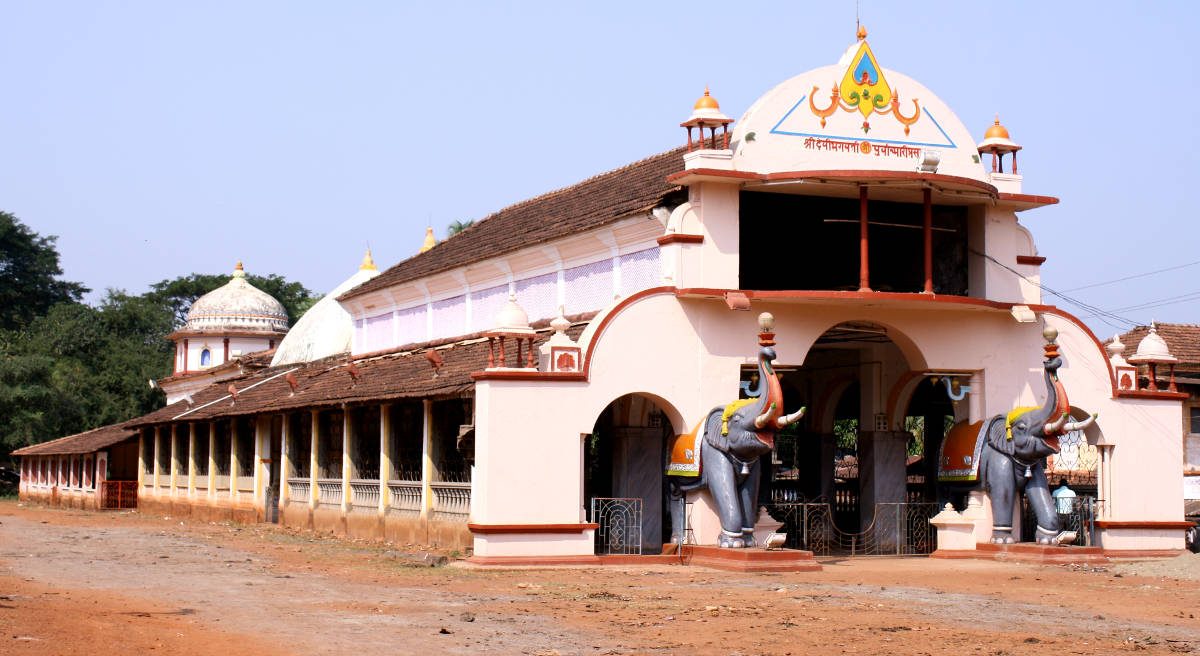Pednechi Punav is a celebration organised by the Shree Bhagwati Devasthan of Pernem. The celebrations begin nine days prior to Dussehra. These nine nights are known as Navratra. The first day of the festival of Navratra is called Ghatasthapanas. Dussehra is also known as ‘Kojagiri Poornima’. The history of this festival cannot be traced to a precise date.
Royal family of Pernem
Deshprabhu’s were the ruling clan of Pernem. Under their rule, the festival was celebrated with much fervour. However ever since their fall, the celebrations have been toned down. Rituals have been changed or entirely discontinued. However, the royal family still holds the honour of performing the main pooja.
Seven Mahajans
Out of the nine days of the festival, two are celebrated by the Devasthan samiti. Remaining seven days are divided into seven mahajans to celebrate on a particular day. The village Comunidade (of which the Mahajan’s are members) are divided into seven vangors.
Dessai Deshprabhu – first vangor
Prabhu Dessai – second and fifth vangors
Naik Dessai – third and sixth vangors
Sawal Dessai – fourth vangor
Kotkar, Kumbhar, Gurav, Sutar and Mahar
Toran (flower garland) is prepared by Kotkars. While preparing the taranga (decorative umbrellas) was entrusted to Guravs (local priests), Kumbhars (potters) and sutars (carpentars). Mahar community is given the responsibility of playing the dhols (drums).
Earlier, kirtans were organised for all the nights of navratra. These were done to educate and also entertain. Dancing and singing used to commence after the Kirtans. Dancing and singing would take place during the Palki (palanquin) procession. This practice was discontinued after the decline of the Devadasi system. Women now dance and sing in a symbolic manner near the temple.
Tarangamutsav

Tarangas are commonly used in religious celebrations in Goa, Maharashtra and Karnataka. They signify happiness and prosperity. On the Dussehra day, Tarangamutsav is celebrated at the Bhagwati temple with religious fervour. Lord Ravalnath and Lord Bhutnath each have their own tarangas. Lord bhutnath resides with Lord Ravalnath since he does not have his own temple.
The tarangas are taken in a procession during the eight days of festivities. The processions begin at the Karpanch pipal tree and end at Bharacho chavato. It is believed that the taranga of Lord Bhunath has the power to free those possesed by evil spirits.
Dussehra night
At midnight gaddas (religious persons) believed to be incarnations of Lord Bhutnath run into the forest in ecstasy. They are followed by the devotees who try to pacify the angry Lord Bhutnath who is believed to not have his own temple demands a temple be built in the duration of the night.
Devotees realising that the temple cannot be built in a night pacify him by saying, “Bandtoi-ba-saiba“. It is believed by doing this the deity is pacified and the celebrations come to an end.


